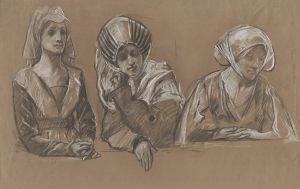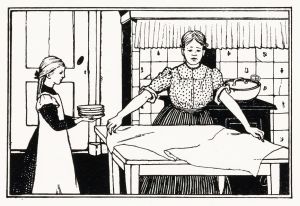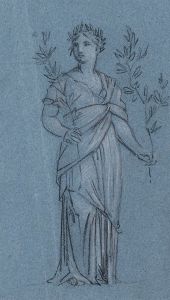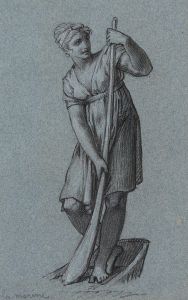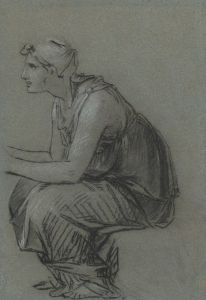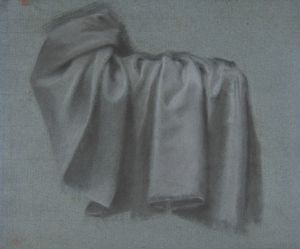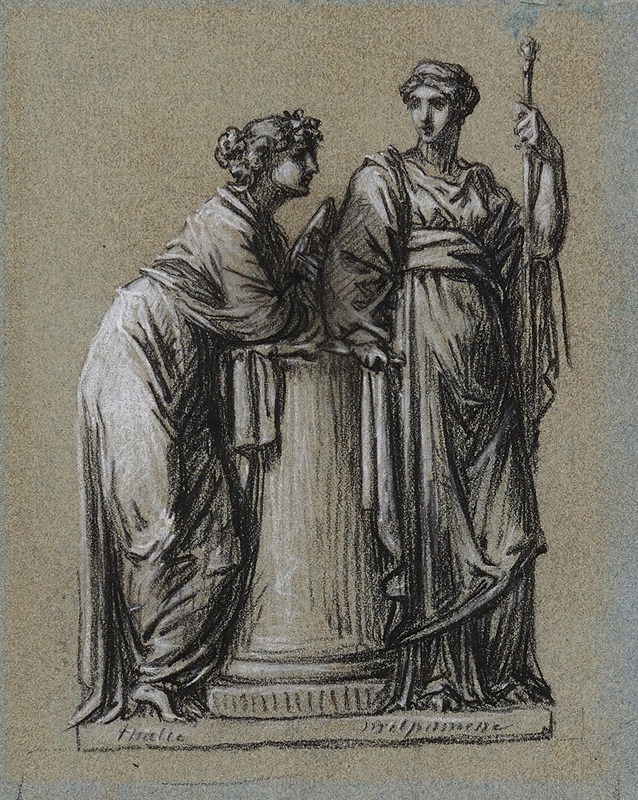
Thalie et Melpomène
A hand-painted replica of Pierre-Paul Prud'hon’s masterpiece Thalie et Melpomène, meticulously crafted by professional artists to capture the true essence of the original. Each piece is created with museum-quality canvas and rare mineral pigments, carefully painted by experienced artists with delicate brushstrokes and rich, layered colors to perfectly recreate the texture of the original artwork. Unlike machine-printed reproductions, this hand-painted version brings the painting to life, infused with the artist’s emotions and skill in every stroke. Whether for personal collection or home decoration, it instantly elevates the artistic atmosphere of any space.
Pierre-Paul Prud'hon was a French Romantic painter known for his allegorical and mythological subjects, as well as his portraits. One of his notable works is "Thalie et Melpomène," which translates to "Thalia and Melpomene." This painting is an exemplary representation of Prud'hon's ability to blend classical themes with a romantic sensibility, capturing the essence of the muses of comedy and tragedy from Greek mythology.
Thalia and Melpomene are two of the nine Muses in Greek mythology, each representing different aspects of the arts. Thalia is the Muse of comedy and idyllic poetry, often depicted with a comic mask, a shepherd’s staff, or a wreath of ivy. Melpomene, on the other hand, is the Muse of tragedy, typically shown with a tragic mask, a club, or a sword. Prud'hon's depiction of these figures would have drawn on these traditional attributes, presenting them in a manner that highlights their contrasting yet complementary roles in the theatrical arts.
Prud'hon's style is characterized by its soft contours and the use of chiaroscuro, a technique that employs strong contrasts between light and dark to achieve a sense of volume and three-dimensionality. This approach would have been evident in "Thalie et Melpomène," where the interplay of light and shadow could enhance the dramatic tension between the two muses. His work often reflects a delicate balance between neoclassical precision and romantic emotion, a duality that would be fitting for a painting featuring the muses of comedy and tragedy.
The painting likely reflects Prud'hon's interest in the human form and expression, capturing the nuanced emotions associated with comedy and tragedy. His ability to convey complex emotional states through subtle facial expressions and body language would have been particularly effective in a work focused on these two contrasting themes. Prud'hon's training and influences, including his study of classical art and his exposure to the works of Renaissance masters, would have informed his approach to this subject matter.
While specific details about the creation and current location of "Thalie et Melpomène" are not widely documented, Prud'hon's oeuvre is celebrated for its contribution to the Romantic movement in France. His works are held in high regard for their technical skill and emotional depth, and they continue to be studied for their unique blend of classical and romantic elements.
In summary, "Thalie et Melpomène" by Pierre-Paul Prud'hon is a significant work that embodies the artist's mastery of allegorical themes and his ability to convey the dual nature of human experience through the figures of the muses of comedy and tragedy. Prud'hon's legacy as a painter is marked by his skillful integration of light and shadow, his nuanced portrayal of emotion, and his contribution to the Romantic movement in art.






